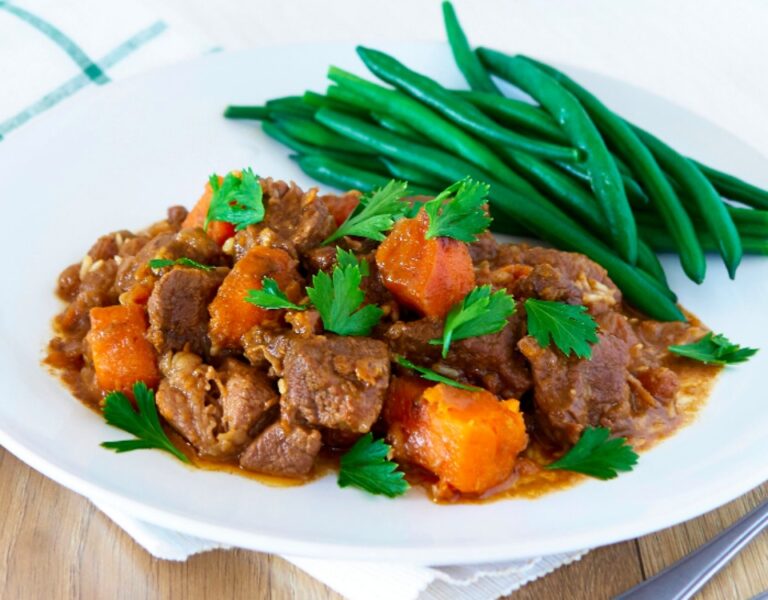Portion Control Guidelines For Healthy Weight Loss
Portion control is one of the most important factors in weight loss, weight maintenance and weight gain, especially when you are trying to lose weight.
If you eat just the right amount of food, you’ll strike a balance and you’ll be able to lose weight.
If you eat too much food, you’ll gain weight – and if you eat too little (which many women do because they think it will boost weight loss), you could plateau or actually gain weight and you run the risk of becoming malnourished. So how do you strike the right balance?
Wherever you go – whether you’re eating out, grabbing a sandwich on the run or getting a coffee, it’s likely that you’ll find that the portion sizes are huge.
And this increase in portion sizes out of the house means that many of us are starting to serve larger portions at home.
This is due to a number of reasons – but one of the key factors is that we are often encouraged as children to eat everything on our plates to reduce waste, or encouraged to eat everything at dinner so that we get a dessert. This ingrained habit can cause us to overeat right into adulthood, as we get confused as to how much food we should actually be eating.
Often, when we’re given a full plate of food, we eat everything on offer – or we pile our plate so that it’s full of food, because we don’t know the right portion sizes or because we find it difficult to assess the portions that are on the plate.
Portion Control Tips
Government guidelines recommend that you eat a number of portions of foods from different food groups each and every day to get a range of vitamins and nutrients to support your health.
Fruits and Vegetables
Guidelines recommend that you eat at least 5 or more portions of fruits and vegetables every day, but the optimum is at least 2 portions of fruit and 4 portions of vegetables. A portion of fruits and veggies is generally considered to be a large handful of the raw fruit or vegetable.
Wholegrains/Carbohydrates
Each meal should include a portion of carbohydrates, ideally wholegrain carbohydrates to keep you fuller for longer and to improve digestive health. 4 portions of wholegrain carbohydrates are recommended per day – but if you eat a potato, this should be taken as a carbohydrate portion rather than a vegetable portion.
A standard portion of potato should be the size of a computer mouse (225g), a portion of spaghetti pasta should be less than 1.5cm in diameter (I keep a small coin in the cupboard so that I can hold the pasta up against it, that way, I know I have the perfect serving size!), a portion of shaped pasta should be a small heaped handful (40g dry) and a portion (150g) of cooked rice should be, when packed together, around the size of a small tin of tuna.
Protein/Dairy
https://www.instagram.com/p/BTJiMdoDN5s/
Protein and dairy are a key part of any diet – they improve general health and they can boost weight loss. Portions of protein (1-2 a day) should always be around the size of your palm. Protein in the form of meat, like chicken, beef, game or pork should be trimmed of all visible fat. A portion of tofu should be the size of your palm, and a portion of beans should be a small heaped handful.
Dairy portions should be kept fairly small, as they tend to contain more fat – a portion of milk should be a small glass of 250ml, a portion of yoghurt should be a small 50g-100g pot and a portion of cheese should be matchbox-sized (28g). Cheese should be eaten less frequently than milk and yoghurt as it contains more fat.
Fat
It might surprise you, but guidelines recommend that you eat three portions of heart healthy fats each day – maximum serving should be 1 tbsp. of heart healthy fat, such as extra-virgin olive oil. These fats improve the health of your skin, hair and nails, and they also boost the health of your internal systems and your eyes.
Tips to Remember
Once you’ve gotten used to these portion sizes, you’ll start to do them out of habit – which will keep you on track. One tip is to serve your dinner on smaller plates – that way, if you eat the whole plate of food, it doesn’t matter! Some pile half of the plate with vegetables. Portion servers are a great tip too – spaghetti servers will tell you how much spaghetti to cook, while a clean tuna tin that you can pack cooked rice into is an easy way to portion rice – it’s a great way to present it too!
If you prefer, you can weigh your food – just be sure to reset the scale to zero when you’ve put your plate on top of it. Once you’ve weighed your food out a few times, you’ll get used to the portion size. Whichever method you choose, stick with it once you’ve found something that works for you!
And you can also check your BMR to ensure your calorie intake is enough for your own body type – or if you are intaking too much calories.



